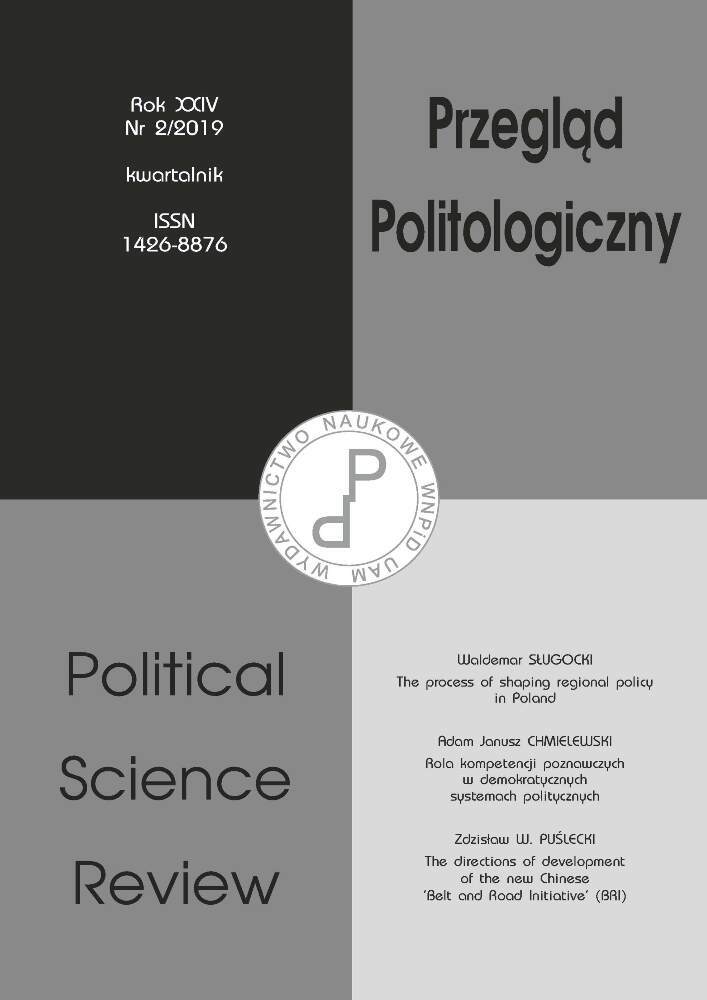Abstract
This article addresses relations between Europe and the countries of the Middle East and the implications of these relationships over the past two decades, through an examination of the events of the ‘Arab Spring.’ The Arab Spring refers to a chain of events that swept through the Arab countries from late 2010, characterized by demonstrations, violence, and civil war. This was sparked by resistance to tyrannical regimes and led to the fall of the rulers of Egypt, Tunisia, and Libya. However, Islamists were able to utilize the protesters, who sought democracy, an equal economy, and the elimination of governmental corruption, to further their ambitions. At that time, it was not clear what the new regimes would look like, but it was widely expected that Islamist elements would gain power. Europe responded positively to these events, in terms of declarations, policy, and physical involvement, from the fear that Islamist forces would take advantage of the outcomes of the protests, despite the fact that, for decades, there had been collaboration and friendly relations between Western nations and many of the overthrown tyrants. This policy of turning a blind eye to the lack of democracy and human rights violations in these countries, however, had been perceived by many as contrary to European values. On May 25, 2011, the European Union published a document admitting their failure to achieve political reforms in the neighboring Arab countries. Following the events of the Arab Spring, a new approach to strengthening the partnership between Europe and the Arab world was needed. The objectives of European policy towards the Muslim world include halting massive Muslim migration, reducing the influence of fundamentalist and radical Islam in the Middle East and among Muslims in Europe, and ensuring a supply of energy resources obtained from these countries. Meeting these challenges will be a significant step in the right direction.
References
Amidror Y. (2015), Chaos because of the Storm, Begin Sadaat Center for Strategic Researches (Hebrew).
Barcelona Declaration and Euro-Mediterranean Partnership, EU, Europa, November 22, 2011, http://europa.eu/legislation_summaries/external_relations/relations_with_third_countr ies/mediterranean_partner_countries/r15001_en.htm.
Bendata B. (2012), The Arab Upheaval and Lebanon: Is Everything Quiet on the Levant Front?, in: One Year to the Arab Spring: Regional and International Implications (pp. 55–57), eds. Y. Guzinsky, M. Heller, The Institute for Researches of National Security, Tel Aviv University, Memorandum 114, March (Hebrew).
Brum S. (2012), Regional Implications of the Arab Spring, in: One Year to the Arab Spring: Regional and International Implications (pp. 39–41), eds. Y. Guzinsky, M. Heller, The Institute for Researches of National Security, Tel Aviv University, Memorandum 114, March (Hebrew).
Eran O. (2011), The West and the Arab Spring, The Institute for National Security Researches, Tel Aviv University, Strategic Update, July, 14 (2), 15–26 (Hebrew).
Guzinsky Y., Heller M. (2012), Introduction, in: One Year to the Arab Spring: Regional and International Implications (pp. 7–8), Y. Guzinsky, M. Heller, The Institute for Researches of National Security, Tel Aviv University, Memorandum 114, March (Hebrew).
Hashemi N. (2009), Islam, Secularism and Liberal Democracy: Toward a Democratic Theory for Muslim Societies, Oxford University Press, New York.
Heisbourg F. (2003), New Security Landscape: The End of the Post-Cold War Era, “Asia-Pacific Reaccessed,” 10(1), pp. 52–63.
Herm A. (2008), Recent Migration Trends: Citizens of EU-27 Member States Become Ever More Mobile while EU Remains Attractive to Non-EU citizens, Eurostat, 98/2008, http://epp.eurostat.ec.europa.eu/cache/ITY_OFFPUB/KS-SF-08098/EN/KS-SF-08-098-EN.PDF.
Hollis R. (1997), Europe and the Middle East: Power by Stealth?, “International Affairs”, 73(1), pp. 15–29.
Horowitz N. (2013), The ‘Islamic Spring’ – Revolution of Transition Season, in: Molad – Center for Renewal of Democracy, http://www.molad.org.article (Hebrew).
International Money Fund (2011), Report to the G-8 Summit: Economic Transformation in MENA: Delivering on the Promise Shared Prosperity, http://www.imf.org/external/np/g8/pdf/052711.pdf.
Kam E., Bendata B., Dekel U., Heller M., Shwitzer Y. (2015), Shocks in the Middle East, in: Strategic Assessment for Israel, 2014–2015, Institute for National Security Researches, Tel Aviv University, pp. 77–97 (Hebrew).
Kemp G. (2003), Europe’s Middle East Challenges, “The Washington Quarterly”, 27(1), pp. 163–177.
Kenig O. (2013), The Arab Spring and Democracy: A Look at Two Comparative Measures, The Israeli Institute for Democracy, June, https://www.idi.org.il/articles/9678 (Hebrew).
Livman T. (2013), Explanations of the European Policy towards the “Arab Spring”: Calculated Risk from Lack of Choice and the Implications for Israel, in: Politics – Israeli Journal for Political Science and International Relations, The Leonard Davis Institute for International Relations, The Hebrew University in Jerusalem, 22, pp. 79–106 (Hebrew).
Meoz M. (2013), Political Islam and the Arab Spring, in: Israel and the Arab Spring: Opportunity for Change (pp. 34–41), eds. N. Goren, J. Yodkovitz, Outlines of the Israeli Institute for Extra-Regional Policy (Hebrew).
Podeh E. (2013), The Arab Spring as a Historical Opportunity, in: Israel and the Arab Spring, an Opportunity for Change (pp. 5–6), eds. N. Goren, G. Yudkovitz, Mediators. The Israeli Institute for Extra-Reigonal Policy and the Friedrich Ebert Fund (Hebrew).
Sasar A. (2012), Tradition and Modernity in the “Arab Spring”, Institute for National Security Researches, Tel Aviv University, Strategic Update, April, 1154 (1), pp. 27–37 (Hebrew).
Stein S. (2012), The European Union and the Arab Spring, in: One Year to the Arab Spring: Regional and International Implications (pp. 25–27), Y. Guzinsky, M. Heller, The Institute for Researches of National Security, Tel Aviv University, Memorandum 114, March (Hebrew).
Volpi F. (2008), Introduction: Strategies for Regional Cooperation in Mediterranean: Rethinking the Parameters of the Debate, in: Transnational Islam and Regional Security –Cooperation and Diversity between Europe and North Africa, ed. F. Volpi, Routledge, New York, pp. xii–xvi.
Yadlin A. (2012), A Year to the Arab Uprising, in: One Year to the Arab Spring: Regional and International Implications (pp. 11–17), eds. Y. Guzinsky, M. Heller, The Institute for Research of National Security, Tel Aviv University, Memorandum 114, March (Hebrew).
Youngs R. (2006), Europe and the Middle East in the Shadow of September 11, Boulder, London.

